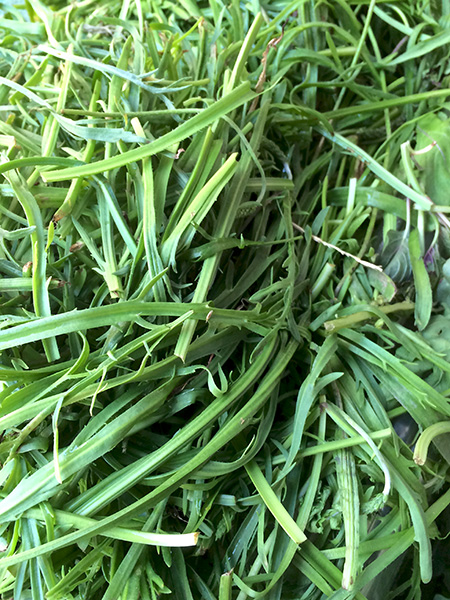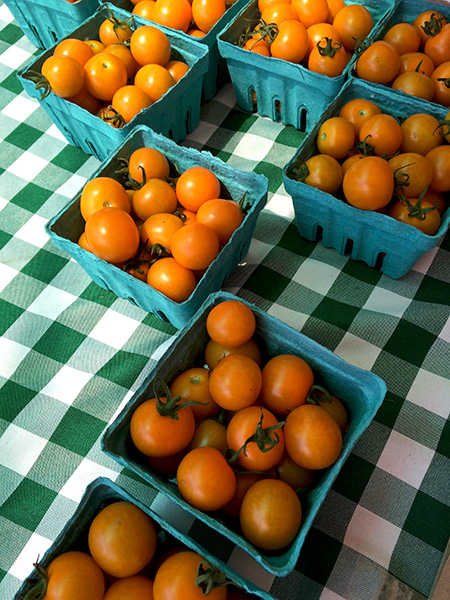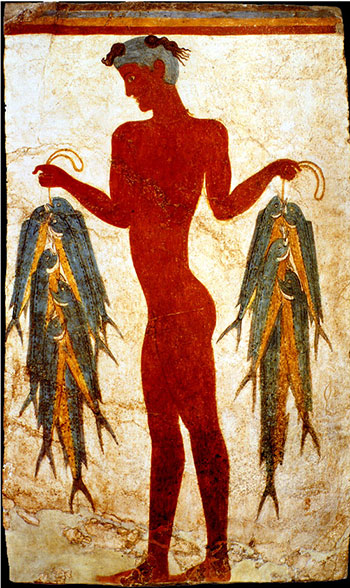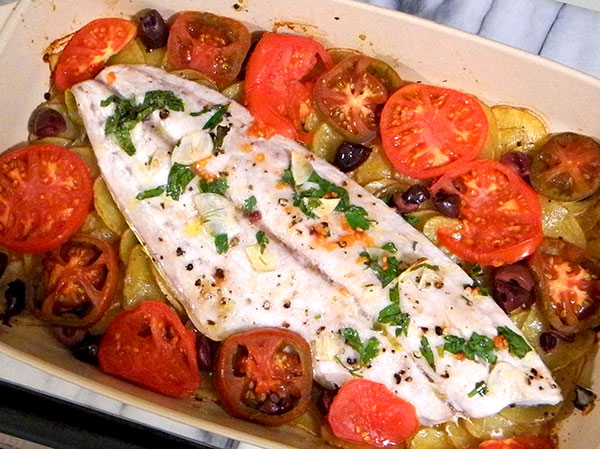
When I saw ‘Mahi-mahi‘ posted on the board of Paul’s stand in the Greenmarket I immediately knew what we were going to have for dinner. When it came to my turn in line, I stepped right up and asked for ‘Dolphin’. Paul registered a little mock horror, since there were probably people within earshot of my voice, and even today many associate the word, ‘dolphin’ with Flipper.
I had already come to appreciate the flavor of this fish, and last night it was pretty extraordinary, with flavors and textures far more complex than I had reason to expect, and yet still retaining the character of the fish itself. To the skeptical: No, all white-flesh fish do not taste the same.
Also, and not at all incidentally, the Greenmarket vegetables were totally up to the challenge of accompanying a good fish.

- one Dolphin fillet, about 13 ounces, from Pura Vida Fisheries, dry-marinated with more than half a tablespoon of organic lemon zest, an equal amount of chopped thyme leaves from Bodhitree Farm, salt, and pepper, set aside for 20 minutes or so, after which it was seared in a hot copper fish pan for about 3 minutes, skin side up, then turned over and that side seared for the same length of time, the heat lowered and the pan loosely covered for a very few minutes with aluminum foil, during which time some thin-ish slices of stems one stem of a young red onion from Bodhitree Farm were introduced and briefly sautéed with the fish before it itself was divided into 2 pieces, removed and put onto plates, alliums and pan juices poured over the top
- small organic Butterball potatoes from Norwich Meadows Farm boiled in salted water until just tender, drained, halved, dried in the pan, rolled in olive oil, seasoned with salt and pepper, some chopped lovage added before they were served (I added more after taking the picture above)
- small ‘Royal Snow Peas’ from Alewife Farm, the stems removed, sautéed in olive oil, seasoned with salt and pepper, sprinkled with chopped summer savory from Stokes Farm
- the wine was an Oregon (Willamette) white, Montinore Estate Pinot Gris 2015
- the music was Q2 Music, streaming





